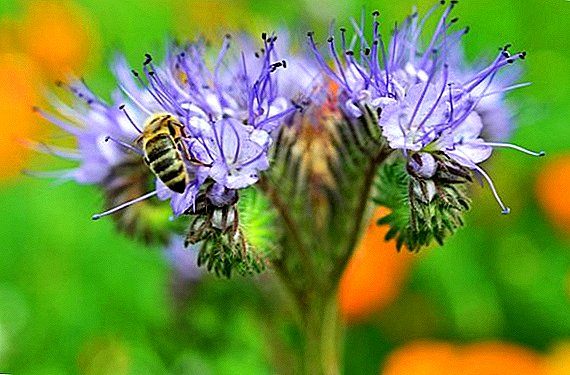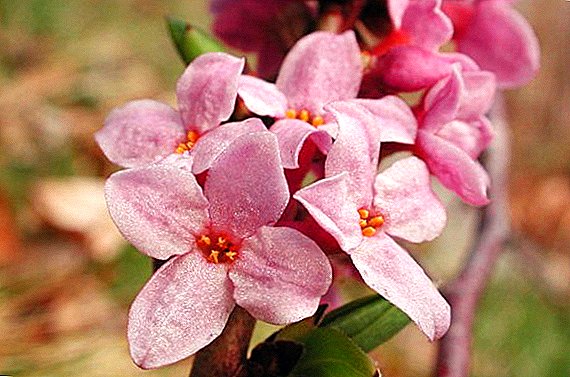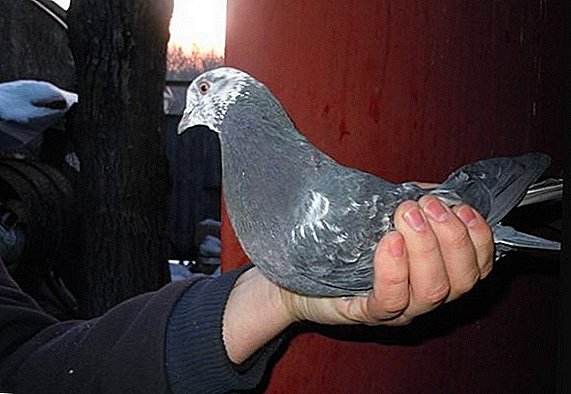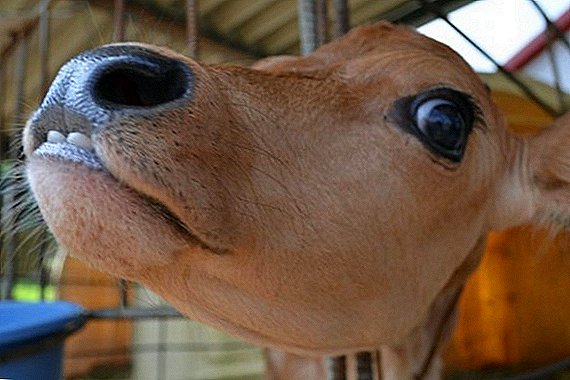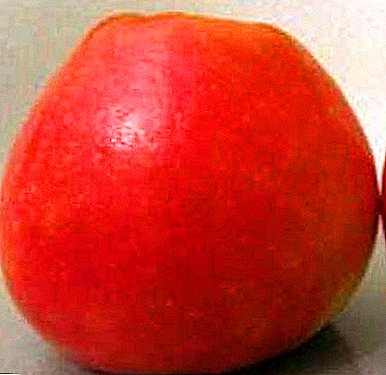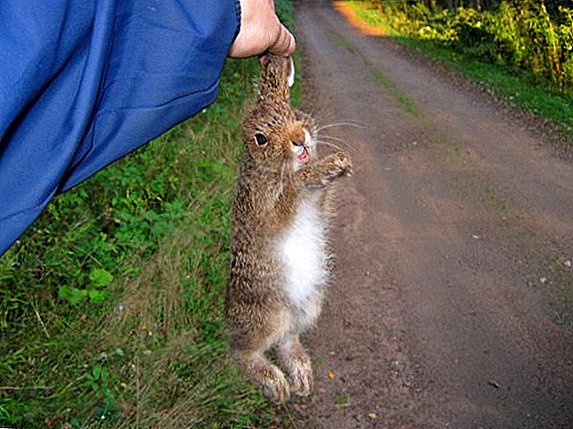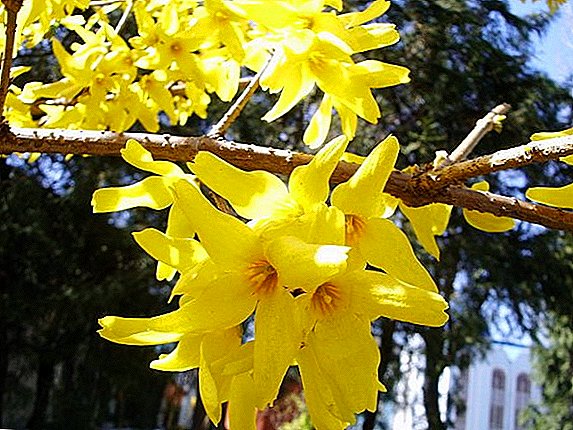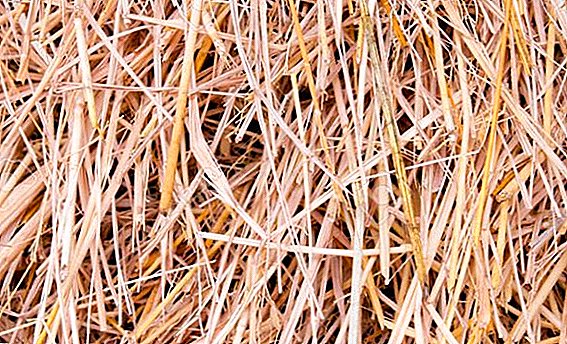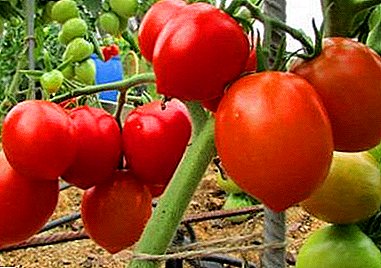 Water, heat, light and nutrients are necessary for the proper development of grain crops and for obtaining good yields.
Water, heat, light and nutrients are necessary for the proper development of grain crops and for obtaining good yields.
The most important of these substances after oxygen, carbon and hydrogen are minerals - nitrogen (N), phosphorus (P) and potassium (K).
Although they are present in the composition of the soil, their amount is insufficient, which leads to the need for chemical fertilizers.
Fertilizers for cereals: general characteristics
Fertilizers are divided into two classes: organic and inorganic. Organic - manure, compost and peat - are of plant and animal origin. Mineral have inorganic artificial nature. They are more accessible, more effective and have a wide spectrum of action. In addition, they are cheaper and easier to transport.
Learn how to use as a fertilizer cow, pork, rabbit, sheep, horse manure, chicken and pigeon droppings.Mineral fertilizers include metals and their acids, oxides, salts. They are simple, consisting of one substance, and complex.
The main types of simple mineral fertilizers:
- Nitrogen - liquid ammonia, ammonium chloride;
- phosphoric - superphosphate simple, phosphate rock;
- potash - potassium chloride.

Find out what are the properties of peat, how to make compost.Nitrogen It is very necessary at all stages of growth of green mass and the formation of the fetus. It directly affects the properties of raw materials and the amount of the crop.
Phosphorus, in turn, is indispensable for the growth of the root system, flowering and the appearance of grains. Its deficiency leads to a slowdown in the growth of the whole plant, the development of flowers and cobs.
Potassium mainly responsible for the transportation and distribution of water. Without this element, cereals are less resistant to lodging and drought.
Important! When purchasing and fertilizing grain crops with mineral fertilizers, you should first familiarize yourself with the attached manufacturer's instructions for their use. This is especially true for the integrated application of fertilizing.
Norms and terms of application of mineral fertilizers for grain
Consider what mineral dressing required for grain crops, as well as when and in what amounts they should be made.
Corn
Culture is extremely demanding on the qualitative composition of the soil, and without modern fertilizers one cannot expect a high yield. Corn needs nutrition starting from the growing season and up to full ripeness of the grain. The most active absorption of nutrients occurs in the period from the appearance of sweeping pans to flowering. Scheme: when to feed corn
Scheme: when to feed corn
Learn what kinds of varieties and varieties of corn there are, how to plant, process with herbicides, when to clean, how to grow for silage, how to store corn.Potassium and phosphorus are deposited for winter plowing (or plowing in the nonchernozem zone). Nitrogen is definitely needed in the spring during the pre-sowing tillage, when fertilizers are made when sown in planting nests.
To avoid the harmful effects of the solution on the corn sprouts, top dressing is applied at some distance from them - 4-5 cm to the side and 2-3 cm below the seeds. During the period of the most active growth it is good to feed the plants with nitrogen.
Corn fertilizer on forest-steppe chernozem:
- nitrogen: before sowing - 100-120 kg / ha, after sowing - 2 kg / ha;
- phosphorus: before sowing - 60-80 kg / ha, after sowing - 5 kg / ha;
- potassium: before sowing - 80-100 kg / ha.
Many people do not know about the benefits of corn stigmas, than useful corn for human health.
Wheat
Wheat reacts very positively to mineral supplements. Spring grain finishes the absorption of the main part of the nutrients for the earing period - flowering. If the precursors were cereals, potatoes or beets, then the need for additional feeding, especially with nitrogen, is slightly higher.  Scheme: when to feed wheat If the crop is planted in non-black earth, where perennial legumes and cereal grains used to grow, and in clean pairs in arid areas, then it does not so much need additional nitrogen.
Scheme: when to feed wheat If the crop is planted in non-black earth, where perennial legumes and cereal grains used to grow, and in clean pairs in arid areas, then it does not so much need additional nitrogen.
Find out what is the rate of sowing of winter wheat, what and how to feed winter wheat.Usually the plant is fed with nitrogen before sowing. Phosphoric and potash top dressing is perfectly carried out in rows when sown with deep planting of fertilizers for autumn plowing in a complex with a low dose of superphosphate.
In irrigated areas, it is wise to use early fertilizing with nitrogen with increased doses. Fertilizing with nitrogen after flowering, especially with urea, will increase the protein content and baking qualities of the grain.
Fertilizer of winter wheat on forest-steppe chernozem:
- nitrogen: before sowing - 30-40 kg / ha, after sowing - 40-60 kg / ha;
- phosphorus: before sowing - 40-60 kg / ha, while sowing - 10 kg / ha;
- potassium: before sowing - 40-50 kg / ha.
Did you know? Wheat is one of the first domesticated cereals. Its important role can be judged by the fact that in ancient times the Roman Empire was called the "wheat empire". And in Russia from time immemorial grain crops were called "abundance." In the future, this word began to denote something in large numbers, and the prefix "from" appeared.

Barley
Barley also very gratefully responds to mineral supplements. He almost finishes absorbing nutrients at the time of earing - flowering.
Nitrogen fertilizing is performed simultaneously with the pre-sowing treatment of the soil. The supply of barley with phosphorus and potassium is good to provide with deep planting of top dressing for autumn plowing in a complex with a low volume of superphosphate or ammophos in rows when sown.
Learn how to sow winter and spring barley.Irrigation requires early fertilizing with increased doses of nitrogen fertilizers. Feeding with nitrogen after flowering, especially with urea, will increase the protein content of barley and improve its quality.
Barley fertilizer system on forest-steppe chernozem:
- nitrogen: before sowing - 60-80 kg / ha;
- phosphorus: before sowing - 80-100 kg / ha, while sowing - 10 kg / ha;
- potassium: before sowing - 100-120 kg / ha.
Oats
Oats are not so demanding on the composition of the soil, such as wheat or barley. It carries a good acidic soil and is resistant to short frosts.
Otherwise, it is characterized by the same activity of absorption of nutrients and the need to introduce nitrogen, phosphorus and potassium during the pre-sowing preparation of the soil.
Learn how to grow oats, the subtleties of using oats as a siderata.Oat fertilizer system on forest-steppe chernozem:
- nitrogen: before sowing - 40-60 kg / ha;
- phosphorus: before sowing - 40-60 kg / ha, while sowing - 10 kg / ha;
- potassium: before sowing - 40-60 kg / ha.

Pic
Most of the soils where rice is grown are infertile and contain an insufficient concentration of phosphorus and nitrogen. The potassium content is usually sufficient. If the checks are not yet flooded, the topsoil contains a significant amount of nitrates, which, when flooded, are quickly washed out and denitrified, or reduced to ammonia.
In connection with the possible leaching of rice, ammonia forms of nitrogen supplements should be applied - ammonium sulfate, ammonium chloride and urea. The latter is not absorbed by the soil and can be washed out with irrigation water.
Nitrogen fertilizers are applied before the period of maximum need for rice - from germination to the end of tillering. Most of the (2/3) is used before sowing together with phosphate, and the rest - when feeding in the period from germination to tillering.
The optimal rate of nitrogen for rice on saline soils is 90 kg / ha and the same amount of phosphorus (after alfalfa - up to 60 kg / ha). However, in conditions of fluids with repeated sowing of rice, 120 kg / ha of nitrogen are deposited on meadow-bog and peaty loamy soils, and 180 kg / ha of nitrogen and 90-120 kg / ha of phosphorus on sandy and silty-sandy soils.
Excessive excess of the norm of nitrogen leads to a tightening of the growing season, reducing the resistance of rice to lodging and the defeat of fungal diseases, and in cold seasons - to an increase in empty grain.  Phosphorus reduces the negative effects of increased nitrogen levels, especially during the rooting of rice and its tillering. Given the low mobility of phosphorus in the soil, it can be made in advance for winter plowing or for tillage before sowing. Feeding plants with these fertilizers yields a smaller increase in yield than their pre-sowing or basic application.
Phosphorus reduces the negative effects of increased nitrogen levels, especially during the rooting of rice and its tillering. Given the low mobility of phosphorus in the soil, it can be made in advance for winter plowing or for tillage before sowing. Feeding plants with these fertilizers yields a smaller increase in yield than their pre-sowing or basic application.
Potassium fertilizers are used only a few years after growing rice in one check.
Thus, when placing rice on occupied pairs after grain crops and in repeated sowing, it is necessary to deposit 90-120 kg / ha of nitrogen and 60-90 kg / ha of phosphorus, and 60 kg / ha in the layer of perennial grasses and after other legumes. phosphorus and nitrogen. Nitrogen fertilizers are used only before sowing rice and feeding the ladder.
Did you know? India is the birthplace of rice, there were found its remains, dated to the age of 7000 years BC. e. Alexander Macedonian brought rice to Europe, and Peter the Great brought it to Russia under the name "Saracen Millet". In Asia and Japan, this culture still considered a symbol of wealth. Hence the tradition to sprinkle newlyweds with rice grains, wishing them financial prosperity.
Features of rice fertilizer
Millet
The culture is quite demanding on soil fertility and is characterized by increased resistance to drought. Most of the nutrients it consumes in 40-50 days - from tillering to grain loading.
When breeding millet on the black soil of the South and the soils of the steppe zone, phosphate fertilizers become central. It is very effective to add low doses of superphosphate to the rows - 10 kg per hectare.
Learn how to grow millet.During a drought, the effect of feeding increases with irrigation, then phosphorus and nitrogen are effective in the complex. On typical chernozems, complete mineral fertilizers successfully showed themselves.
Top dressings containing potassium and phosphorus are applied in autumn for plowing, and nitrogenous - in full during cultivation before sowing. Then in the rows with seeds you need to make granular phosphorous tuk in the amount of 10-15 kg / ha. D. (dv is the active substance).
The dose of phosphorus is 60-80 kg / ha d. In., Potassium - 90-110 kg / ha d. In. The dose of nitrogen introduced depends on the precursor:
- after leguminous, tilled, clover - 90 kg / ha d.
- after flax, buckwheat, winter cereals - 110 kg / ha d.

Rye
Until tillering, the culture does not need a large amount of nutrients, but it is extremely sensitive to their deficiency, especially phosphorus. The maximum need for minerals is recorded in the period from going into the tube before earing - the start of flowering. However, the most important period is the spring beginning of the growing season and the time from the emergence of shoots to the departure for the winter.
The full autumn nutrition of rye with potassium and phosphorus has a beneficial effect on its tillering, accumulation of sugars and an increase in winter hardiness.
Learn how to grow rye and how to use it as a green manure.In the spring, when winter rye begins to grow, it must be actively supplied with nitrogen. Moreover, during this period, due to low temperature, leaching, and denitrification, the soil contains few nitrogenous compounds. Late fertilization with nitrogen is envisaged to improve the quality of grain and does not affect the amount of the crop.
Fertilizers of winter rye on forest-steppe chernozem:
- nitrogen: before sowing - 30-40 kg / ha, after sowing - 40-60 kg / ha;
- phosphorus: before sowing - 40-60 kg / ha, while sowing - 10 kg / ha;
- potassium: before sowing - 40-50 kg / ha.
Important! In addition to the relatively high cost, mineral fertilizers have the ability to pollute the environment, therefore it is necessary to responsibly and carefully approach their rational use.

Common Mistakes for Grain Manure
Misconception 1. You can do without foliar dressing, it is enough just to fertilize the soil.
This is wrong; nutrition is necessary for the following reasons:
- With a sufficient amount of the required element in the soil low temperature may not allow to assimilate it to the roots, and then applying fertilizer on the sheet will give the desired effect.
- Foliar top dressings are effective in the period of the extinction of the root system.
- Feeding is convenient to carry out when it is impossible to inter-row processing, for example, when the grain reached a certain height.
- Meals on the sheet allows you to maximize the loss of fertilizer, that is, everything enters the plant.
- New energy-saving technologies limit the methods of fertilizer application, and therefore it is important to use them correctly.
This is also not true, because feeding on a sheet gives an order of magnitude less elements than the plant needs. This is especially true of winter crops in the initial period, when the main food grain is obtained from the soil.  In addition, it should be remembered that the choice of the wrong methods and timing of feeding plants can cause disruption of their development and even yield loss.
In addition, it should be remembered that the choice of the wrong methods and timing of feeding plants can cause disruption of their development and even yield loss.
The most common mistakes:
- Excessive concentration of the solution can cause leaf burn. To avoid this, carefully study the instructions to the drug.
- Independent combination with other feedings can lead to the formation of chemical compounds unfavorable to the plant and harm the plants. You must familiarize yourself with the fertilizer compatibility tables provided by their manufacturers.
- Improper or uneven distribution of top dressing on the leaf surface, non-covering of the lower leaves of the plant.
- Incorrect dose calculation for tape application. The calculation should be carried out not by the total area of the site, but by the actual landing area.
- Incorrect definition of terms of introduction.
Fertilizer of grain crops with mineral fertilizers is an important component of intensive growing technologies, ensuring the correct growth of plants and high yield. However, do not forget that nutrition planning should be done individually for each individual farm and type of grain crop.
How to fertilize cereals: reviews





